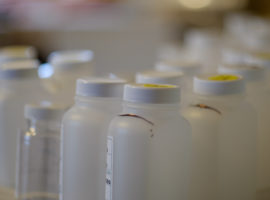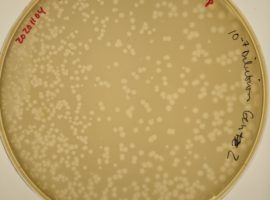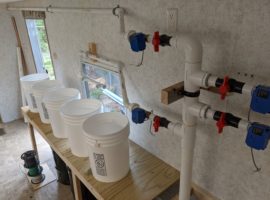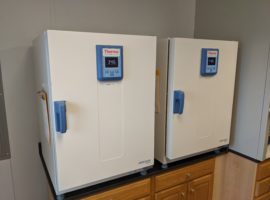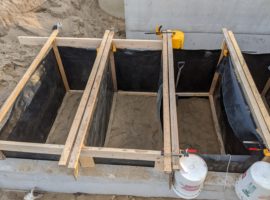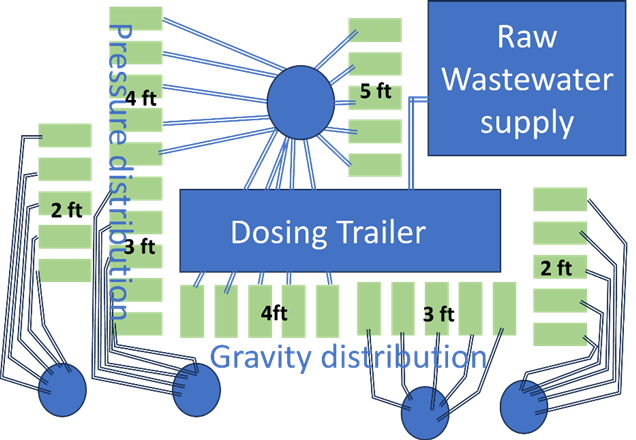
Overhead diagram of the current test cell infrastructure already in place at MASSTC, funded by a previous MassDEP 319 program. Thirty-five test cells, varying by fill depth (2-5 feet) and distribution system (gravity vs. pressure). Five replicates of five.
Pursuant to Governor Charlie Baker’s executive order #562, Massachusetts Department of Environmental Protection (DEP) convened a stakeholder group to review public comments made regarding changes to Title 5 of the State Environmental Code and its impacts on groundwater. One of the comments recommended that DEP consider reduction of groundwater separation (separation between the bottom of a leach field and groundwater) in certain situations
As part of that effort, DEP teamed up with MASSTC to conduct a study to assess pathogen removal in soil absorption systems (leach fields).
Field Study
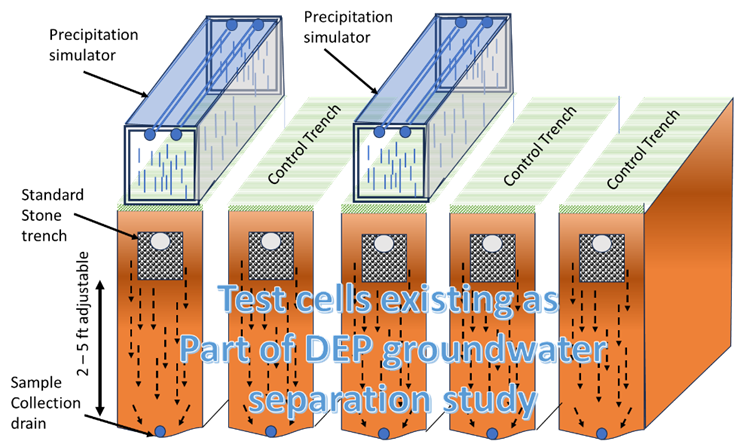
Representation of test cells to be used for measuring impact of precipitation associated with predicted climate change. All infrastructure except precipitation simulator already exists at MASSTC facility through previous 319 funding.
The objective of the study is to evaluate pathogen removal at varying depths in the infiltrative surface beneath a wastewater dispersal unit.
Pathogen transport is a primary concern of public health regulators nationwide for the obvious concern regarding disease transmission from both ingestion and indirect exposure though recreational and other activities. When Title 5 (310 CMR 15.00) was reviewed in the early 1990’s, MassDEP looked at the World Health Organization’s recommended 5 log removal (99.999%) of pathogens and reviewed available literature on pathogen removal (reviewed in the 1991 Technical Evaluation of Title 5 by DeFeo, Wait & Associates, Inc.) in order to determine the degree of removal that occurs at varying depths to groundwater for onsite systems. The 1995 revisions to Title 5 supported the longstanding requirement of a minimum of 4 feet of separation to provide a high pathogen removal factor in order to protect public health and groundwater as a drinking water source. The 1995 revisions further required a 5-foot separation for more porous soils. DEP used 4 log removal, or 99.99%, as the basis for the 4-foot separation requirement.
The study will look at five indicator organisms:
- Escherichia coli
- Fecal (Thermotolerant) coliforms
- Enterococci
- MS-2 male-specific coliphage
- Somatic coliphage
To learn more about other projects MASSTC has participated in, go here.

